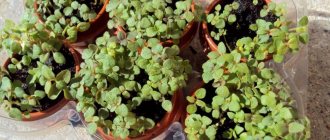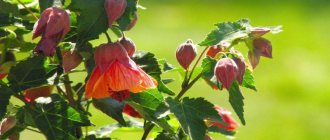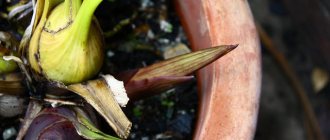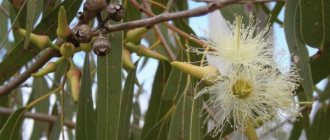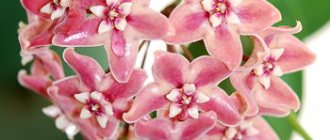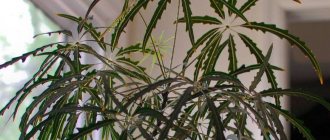Growing abutilone from seeds at home is actually very easy. It’s in vain that experienced flower growers scare us. Of course, certain knowledge is necessary, but anyone who wants to grow this indoor plant on their own can master it.
We know it as ropeweed, indoor maple, and Indian mallow. In fact, abutilone is from the mallow family, yes, a relative of our garden favorite hollyhock and indoor hibiscus. Australia, Africa, Asia, South America are the homeland of the plant. Abutilon is found there in subtropical forests and is very much adored for its long flowering and beautiful bell-like flowers.
We also fell in love with this shrub, it can be found in the large halls of banks or libraries, it grows in private greenhouses, decorates winter gardens, and just our homes. There are entire clubs for abutilone lovers. Now a large number of hybrids have been bred, variegated, of different colors, from white to crimson.
In our garden stores you can now buy ready-made seedlings with roots that you can immediately plant at home. There are also a lot of seeds on sale. By the way, abutilone seeds are easier to buy and cheaper. And there are flower growers who are interested in growing the plant themselves.
Advantages of seed propagation
Fresh seed material of an ornamental plant has very high germination rates , and respect for planting and growing rights allows you to obtain a large amount of healthy and high-quality seedling material.
Currently, breeders and amateur gardeners have produced many interesting varieties of abutilone, so sowing several varieties in one flower pot allows you to create the most interesting and highly decorative flower arrangement. Properly grown from seeds, abutilons have excellent hardiness and are perfectly adapted to growing conditions.
Choosing soil and pot
Indoor maple is one of the most unpretentious plants, but to maintain its decorative appearance, it will be necessary to use moisture-permeable, fairly light soil for cultivation. The nutrient soil mixture must include a small amount of perlite or coarse river sand , which will make the soil light and prevent rot from damaging the root system.
As drainage, you can use a layer of expanded clay, small pieces of foam plastic, and relatively small clay shards. The average height of such a layer can be a quarter of the landing capacity. Good results are shown by seeds sown in a ready-made soil substrate for growing palm trees with the addition of perlite or vermiculite. A self-made nutrient substrate should consist of one part of sand, a couple of parts of leaf soil, a couple of parts of humus and four parts of clay turf soil.
6. Signs, useful properties
It is believed that growing this flower at home helps insecure people gain courage; its flowering promotes calm and peace in the home. Bright buds give vigor in the morning and make relationships harmonious, bringing an atmosphere of harmony to the family. This flower is also important for young talents - it is believed that it helps to reveal and develop the talents inherent in a person.
Among other things, Theophrast abutilon also has healing properties - its juice is used as a wound-healing agent and also helps get rid of the manifestations of furunculosis. Disinfecting and anti-inflammatory properties are also used for diseases of the oral cavity - with the help of a decoction they relieve the symptoms of stomatitis.
Compresses with flower juice are used for burns. It is believed that the juice of the green mass can alleviate the condition of elevated body temperature. The leaves and shoots contain plant antioxidants, as well as substances that help strengthen the immune system and improve liver health.
How to plant abutilon seeds (video)
It is important to choose the right planting container for sowing and further growing indoor ornamental plants. When growing most varieties and species, preference should be given to medium-sized flower pots. The fast-growing indoor Sello maple requires the deepest and widest container possible , and growing in a container that is too tight often causes shredded foliage and lack of flowering. For slow-growing and compact varieties, the above-ground part of which has shortened internodes, it is best to select a tight pot, which will stimulate the formation of flower buds.
Possible problems
Abutilone sheds buds and leaves
Abutilon can shed its foliage and buds due to sudden changes in temperature or because it is not watered correctly (the bush does not have enough water or, on the contrary, there is stagnation of liquid in the substrate).
Abutilon leaves turn pale
The flower does not have enough light. In this case, the bush must be moved to a well-lit place, but it must be accustomed to more intense lighting gradually; for this, at first it is placed in the light for only 1–2 hours, then the time is gradually increased. If there is no well-lit window sill in the room, then the shrub will need illumination with fluorescent lamps.
The tips of abutilon leaves dry out
This can happen due to excessively low humidity in the room. On hot days in the warm season, the leaves need to be moistened with a sprayer, but it must be taken into account that the liquid should not get on the flowers. In the cold season, when the air is greatly dried out by central heating devices, an open container filled with water is placed next to the bush to increase humidity.
The lower leaves of abutilon fall off
This happens because the soil mixture in the pot does not contain enough nutrients. Feeding the bush will help correct the situation.
Seed preparation and sowing
Sowing work for growing indoor maple can be done almost all year round, but to obtain the highest quality seedling material, it is best to sow the seeds in early spring. For planting, it is recommended to use the largest and most undamaged seeds that have been calibrated and sorted.
Competent pre-sowing preparation, which consists of soaking, is mandatory. It is advisable to distribute the seed onto tissue that is abundantly moistened in a solution based on growth stimulants in the form of humic acids, Epin or Heteroauxin preparations. The average soaking time is about twelve hours , after which the seeds are placed in clean water at room temperature until they swell or germinate. The planting material prepared in this way is sown in a nutrient mixture prepared in advance and disinfected in the oven.
Before sowing, the planting soil must be moistened very well, the seeds must be distributed at a distance of a couple of centimeters from each other and sprinkled with soil, the layer of which should not exceed 5 mm. The container with the crops should be covered with a transparent plastic film and placed in a room with a temperature regime of 20-22°C. Before mass shoots appear, daily ventilation and spraying with settled warm water from a spray bottle are carried out. The average time from sowing to the appearance of seedlings can vary within two to three weeks.
Diseases and pests of indoor abutilone
It is important not only to skillfully care for the plant, but also to protect it from pests and diseases. Then the “favorite” maple will “reproduce” well and delight you with abundant flowering for a long time.
Problems often arise with the leaves, which are the hallmark of the plant.
- if the crown begins to turn yellow, it means you need to edit the watering regime. Additionally, it is worth changing the lighting mode;
- violent flowering can cause the branches to wither, so you need to pick off old buds;
- spider mites are the most malicious pest that worsens the appearance of the crown, leaving brown spots on it;
- The scale insect leaves sticky spots on the stems and crown. Feeding on cell sap can lead to drying of the crown and individual branches;
- The whitefly leaves entire colonies of larvae in parts under the leaves. The plant begins to gradually deteriorate - dry out, rot, wither. It is almost impossible to get rid of such a pest.
Mostly problems with the appearance of maple appear due to improper placement of the flowerpot and draft. Pests often infest on weakened specimens that have been “living” outside for some time.
Ropeweed is a very beautiful indoor plant that can decorate a home, office or flower garden.
An additional factor is that growing indoor abutilon does not require special skills and knowledge in floriculture. The unpretentiousness of maple attracts many housewives. An additional advantage will be abundant flowering, which lasts for more than 6 months. The shape of the bush is aesthetically attractive.
PS If the article was useful to you, please share it with your friends on social networks. I will be very grateful to you.
Types and varieties of indoor maple
Even without taking into account the varietal diversity, abutilone has many species incarnations. The most common types of indoor maple in indoor culture are:
| Species name | Description |
| Abutilone Hybrid | The species is an American hybrid, characterized by a bush-like plant shape. At home, this species grows up to one and a half meters in height, and its leaves can be either three-lobed or five-lobed. A distinctive feature of hybrid abutilon is slight pubescence of leaves and petioles. The flowers are large, located on very long (up to 20 cm) petioles |
| Abutilone Darwin | The species is considered one of the most attractive due to its amazingly shaped leaves: the upper plates are five-lobed, and on the lower ones the number of blades can reach up to seven. In this case, the central part of the sheet is greatly elongated. Abutilon Darwin's shoots are also beautiful - silky in appearance, they have unsurpassed flexibility, which is why the flower-bearing branches droop beautifully |
| Abutilon Juliet | The most unpretentious type of indoor maple, which is characterized by increased growth and continuous flowering. The leaf blades and shoots are of a typical shape for the genus, and the flowers are large, drooping, and of a wide variety of colors. |
| Abutilon Megapotamian | A very beautiful, sophisticated appearance of indoor maple with drooping thin shoots growing up to 1 meter in length. The flowers resemble Chinese lanterns in shape. Blooms continuously under good growing conditions |
| Abutilon Sello | A hybrid variety of indoor maple with straight, slightly branched shoots and three-lobed leaves. It grows up to 2 meters in height, is distinguished by the variegated color of its leaf blades, with the spots looking like light stripes on a dark green background |
| Abutilon Painted (Spotted) | This indoor maple looks like a compact shrub with soft, non-woody shoots. The leaves of plants of this species are very attractive - they consist of long lobes folded into a five-lobed or six-lobed heart-shaped leaf. The blades are not pubescent, they are smooth and shiny, with white spots located closer to the edge of the leaf. The flower is bell-shaped, with a very long corolla. This species blooms briefly, but very brightly. |
| Abutilon Grape leaf | A tall species, growing up to 2 meters in height or more. The leaves are large, velvety, matte, dark green. The flowers are collected in clusters hanging on elongated petioles. Blooms in spring |
| Abutilon Indian | The species is an annual herbaceous shrub with small bell-shaped flowers and thick, highly pubescent velvety leaves |
Each type of crop is represented by dozens of varieties with different colors and shapes of inflorescences and flowers. The following extraordinary varieties of abutilone are especially popular for growing at home:
| Variety name | Description of flowers and leaves |
| Bella (breeding series) | A compact and very decorative shrub species of indoor maple with a large number of very large flowers that contrast in color with the rich green leaves. The color of the petals is predominantly pastel - peach, pink, light yellow. |
| Kirsche Orange | A compact bush-shaped plant with large orange flowers, corrugated along the edges. |
| Souvenir de Bonn | A low-growing variety that grows up to half a meter in height with variegated leaf blades - dark green with a light, almost white border along the edge |
| White King | A shrub up to 40 cm high with green velvety leaves covered with a bluish coating. The flowers are white, with a bright yellow pistil. |
| Rotterdam | A very bright variety with a lush crown and large fiery red flowers. The pistil is yellow, peeks out a little from behind the petals |
| Large Flowered (breeding series) | A large shrub growing up to 80 cm in height with very large inflorescences on long drooping peduncles. Blooms all year round with proper care. The variety line includes plants with white, pink, orange, red and other flower colors |
| Nabob | The plant is up to one meter high, with solid, rich green leaves and deep red flowers, unusual for an indoor maple. Characterized by long and abundant flowering |
| Royal ilima | Semi-double or double variety with large orange-red flowers and dark green solid leaves |
| White Charm | A variety of grape-leaved abutilon with very large white flowers. The highlight of the variety is its white corolla and incredibly large flower (at least 9 cm in diameter!). The leaves of this variety are similar to the leaf blades of cultivated grapes. |
| Pink Swirls | The most delicate of all indoor maples - with light green foliage and pink flowers, the center of which is decorated with a light pink corolla. |
The varieties presented above are mostly hybrids and are propagated at home by cuttings. To grow one of the described plants, you can also buy seeds. They are sold as a mixture or mix.
Description and characteristics of abutilone
The homeland of Abutilon (indoor maple or rope) is considered to be the tropics and subtropics. The plant belongs to the species of perennial shrubs from the Malvaceae family, from the genus of evergreen perennial and annual herbs, shrubs, and subshrubs.
Indoor maple is a branching plant with brown bark. The leaves are large, 8-10 cm, reminiscent of maple. Young shoots quickly gain height and branch abundantly at the very base. Flowering occurs in single or group ovaries, the inflorescences of the plant are bell-shaped, the size of the inflorescences varies up to 5 cm in diameter.
There is no fragrance in the flowers, but it gives incomparable aesthetic pleasure. The main difference between the existing several types of abutilone is the bright color of the inflorescences, with numerous stamens. Flowering is observed in the wild from April to December. During flowering, the plant is covered with large and bright flowers.
Not all species are found in culture. Hybrids and ornamental varieties have been bred. The peculiarity of the hybrid form is a longer flowering period, as well as variations in the shape of leaves and flowers, and a variety of colors. Rope is ideal for landscaping large premises, winter gardens and rooms.
By combining different varieties and species, you can achieve continuous flowering from only abutilones. By grafting you can get unusual varieties. There are more than 100 plant species. Depending on the species, the plant is propagated by both cuttings and seeds. At home, indoor maple grows well, it is easy to care for and not fussy. In winter, the crop is transferred to a dry, bright and cool place at a temperature of 10-15 degrees, watering is reduced, but the soil should not be dry. As temperatures rise, watering is increased.
In one season, an indoor maple can grow up to one and a half meters, so it is necessary to provide for shortening in early spring or autumn. You should not forget about fertilizing. In summer, the plant is placed on the sunny side, but should not be exposed to direct sunlight. Pests can cause a serious problem for indoor maples; special means of protection are used to combat them.
Video: trimming abutilon
Photo gallery
Growing abutilone "Bella" from seeds
Hybrid Abutilon “Bella-F1” mixture from is especially popular among domestic flower growers. The plant is quite compact in size, and the height of an adult bush rarely exceeds 45 cm. For cultivation, it is necessary to purchase high-quality seed material. The ornamental crop of this series bushes well and begins flowering approximately three months after germination.
Before sowing, seeds must be soaked in water with growth stimulants.
Experienced flower growers recommend cutting the shell slightly. Special peat-humus tablets are best suited for planting:
- the tablet must be soaked in water at room temperature, carefully squeezed out and the non-woven material removed;
- the seed that has swollen and hatched in water must be placed in a recess, after which the tablets must be placed in an indoor mini-greenhouse;
- ventilation is carried out regularly, as well as watering of crops by spraying with warm water;
- after several well-developed leaves have formed on the seedlings, the seedling along with the tablet is placed in an individual flower pot filled with a high-quality nutrient soil mixture.
You can replant a growing ornamental plant as soon as the flower pot becomes crowded. Transplantation is carried out by transferring it into a new flower pot with drainage.
Planting and caring for abutilone
Most often, abutilon is grown in greenhouses, winter gardens and large premises. It is best to take soil for planting with a slightly acidic or neutral reaction.
__________________________________
It's quite easy to prepare it yourself:
Take 2 parts of leaf soil, 2 parts of humus (not fresh, but already lying around for 2-3 years) and 1 part of washed river sand.
__________________________________
Abutilone transplant
Young plants are replanted every year, the first 3–4 years, then every 2–3 years. Each time we take a pot a little larger in size than the previous one, about 2 cm.
If you plant this rope plant in a large pot, you will not get flowering. The small volume of the pot provokes abundant and long flowering.
Photo: Flowering rope plant
How to choose the time to plant abutilon
It is best to replant from February to April, when the plant is not yet actively growing. Transshipment can be carried out all year round, if you do not damage the roots and are careful enough. Be sure to add drainage to the bottom. We do not deepen the root collar.
How to form abutilon using pruning
- With good care, the shrub grows quite quickly. It becomes bulky and can take up a lot of space, which is so important for us in apartments. Timely pruning and shaping will help us here.
- Also, when the plant is thickened, the risk of various insects and diseases increases, which cannot be immediately detected by you, which is fraught.
- At the end of March, the bush needs to be cut back to half its height. This will stimulate the growth of new shoots. The bush will only become more beautiful and lush, there will be more flowers.
- During the summer, prune back new and weak shoots that are thickening the crown or growing inward. Over time, your cable car will need support.
Photo: Trimming abutilon at home
Aftercare
Despite the fact that abutilons are fairly unpretentious indoor plants, and they are often grown by novice indoor floriculture enthusiasts, the decorative crop should be provided with comfortable conditions:
- the flower pot should be located in a well-lit or slightly shaded place without drafts;
- in summer, it is best to take the indoor plant outside and provide protection from gusts of wind or rain;
- in winter, it is recommended to compensate for insufficient lighting with fluorescent lamps;
- in summer, the optimal temperature for growth and development is 22-25°C, and in winter it is advisable to lower the temperature to 13-15°C;
- In the spring-summer period, indoor maple needs to be provided with abundant watering and spraying, as well as fertilizing with mineral and organic fertilizers twice a month.
In order to create the most lush crown, in early spring, pruning is carried out to ½ of the height of the shoot. Throughout the entire growing season, cleansing pruning is carried out to remove weakened and thickening branches. If necessary, the plant is fixed on a support. Transplantation is carried out in the spring, always before flowering. It is better to replant a young crop every year, and an adult plant every other year. Experienced gardeners prefer to grow abutilons hydroponically.
How to feed
With fertilizing for abutilone, everything is incredibly simple: to satisfy its nutritional needs, it is enough, from the end of February until December, to feed it once every two weeks with complex fertilizers for houseplants, or, if possible, add 1/10 of it to the water for irrigation infusion of manure. With such a diet, the indoor maple will certainly grow by leaps and bounds and will delight the owner with lush flowering.
Trimming Features
Since the maple grows quite quickly, and at the same time it does not always turn out lush and compact, it needs total pruning every year. It is better to do this in the spring, when the rested flower is actively growing. Last year's shoots should be cut to a third of their length for better branching, and young ones should be pinched at the crown.
After pruning, it is recommended to place abutilon in warm and humid conditions, spray the bush daily and periodically turn it towards a source of natural light. This will contribute to the formation of a compact, uniform crown.
Features of care
Even a novice gardener can grow abutilon, also known as indoor maple. This tropical representative of the Malvaceae family has an obedient disposition and will delight its owner with lush flowering. Naturally, subject to simple conditions of detention.
Choosing a location and lighting
Well, the cable car is really partial to the rays of the sun. The more light it receives, the better it develops. If you bought abutilon, but care at home requires insufficient lighting, flowers may not appear at all. To ensure maximum light intake, use these recommendations:
- If the house has south windows, feel free to place hybrid abutilon on the windowsill. He will be very comfortable there. Is it only in summer, when the heat is very intense, that a tropical plant is shaded?
- In winter, this beauty is sorely lacking in sun. If you want your indoor maple to bloom, take care of additional lighting.
- In summer, it is periodically taken out into the fresh air. For example, on a balcony or terrace.
Remember: the Tropican cannot tolerate drafts. Strong winds or cold rain can destroy the plant.
Choose a suitable place for abitulon and it will delight you with its flowering for more than one day
Optimal temperature
The ropewort feels best at relatively cool temperatures. Some gardeners even keep it on a glassed-in balcony in winter. And they are doing absolutely the right thing! At this time of year, it needs a significant decrease in air temperature - down to +12 °C. In summer, the range of +20-25 °C will be the most comfortable.
Watering and fertilizing
The “green resident” is partial to high humidity. If the air in the room is too dry, it needs regular spraying with water. But be careful during the flowering period - droplets should not end up on the flowers. In summer, watering is plentiful, but not excessive. Just make sure the soil is always slightly moist.
Once a week, indoor maple needs to be fertilized with fertilizers - both mineral and organic. During the period of green mass growth (spring), it is worth focusing on nitrogen; before flowering, phosphorus and potassium are periodically added. With the onset of winter, you can do without feeding.
6 stages of transplantation
Indoor plants such as hybrid abutilon require regular replanting. The optimal time for the procedure is considered to be the beginning of March. Why early spring? Because new leaves have not yet appeared, and stress will be minimal. The transplant is carried out in 6 stages. Don't let this number scare you - there is nothing complicated about it:
Buying a suitable flowerpot. Usually they focus on the previous flowerpot - the new one should be 2-3 centimeters larger. Soil preparation. The basis for healthy growth and abundant flowering is soil rich in humus. You can prepare it yourself by mixing turf and leaf soil, sand, humus and peat in equal proportions. Some people do it easier and buy universal primer in the store. Preparing home maple
Abutilone is removed from the old pot with the utmost care and the soil is shaken off so as not to damage the roots. Drainage made from materials such as pebbles, expanded clay and polystyrene is placed at the bottom of the new flowerpot. The plant is carefully placed in a pot and the roots are straightened. Carefully cover with soil and water abundantly. The first days provide proper care: sufficient lighting, regular watering and fertilizing.
Note! The new flowerpot should be wider than the previous one, but not too bulky. Otherwise, all the energy of the plant will go to the roots, there will be no flowering
Is pruning necessary?
In just a year, a small sprout turns into a real tree! Therefore, gardeners recommend not to ignore pruning, but to carry it out twice a year.
- Spring pruning. In winter, the stems stretch upward and disrupt the structure of the crown. It’s not difficult to make the “Tropican” compact and return it to its former attractiveness. It is enough to trim these shoots a little.
- Autumn pruning. Before wintering (November), it is recommended to trim off all excess branches. Otherwise, the green pet will take up most of the window sill.
How to pick abutilon seedlings (video)
However, if there are doubts about the seed, then it is best, after calibration and sorting, to treat the seeds in a weak pink solution of potassium permanganate, and also soak them in ready-made or natural stimulants for several hours.
Propagation by cuttings
The simplest propagation method, which even a novice gardener can handle. Start the event in the spring. Moreover, the material for propagation can be selected from the branches that remain after trimming the crown. Select the strongest shoots from them.
Before planting, remove all lower leaves from the branches. This will prevent the cuttings from rotting. If there are buds on the shoots, cut them off at the top. Otherwise, the flowers will take away the juices from the branches. For normal rooting, it is enough to leave 3-4 internodes on the cuttings.
Place the prepared branches in a jar of water. Add 2-3 drops of growth stimulator to the liquid to speed up the rooting process. And it is also advisable to cover the branches with polyethylene, creating a greenhouse effect. When the plants take root, transplant them into separate pots. The process is no different from planting adult plants.
Possible problems during cultivation
Despite the not particularly high requirements for growing conditions, problems can arise with abutilone. So, with a sudden change in lighting or temperature, a flower may shed its leaves. The same thing can happen if the earthen clod is overly dry. If a flower lover notices that the abutilon leaves are turning yellow, it makes sense to place it away from drafts, but closer to the light source. But the drying of their tips may indicate dry air in the room.
Indoor maple can be attacked by aphids, scale insects and spider mites. They can be detected by the appearance of spots in the form of dots, thin cobwebs or deformations on the leaf blades. Scale insects are visible to the naked eye - they usually live on the petioles of leaves or on stems, and look like a tiny shell tightly glued to the plant.
You can fight them with folk or store remedies:
- place the flower under the shower, and then thoroughly soap the leaves and stems with laundry soap, which should be washed off after 5-10 minutes;
- treat the plant with Decis solution according to the instructions;
- in case of mite infestation, the flower is treated with an acaricide and the humidity in the room is increased;
- treat the plant with Actellik according to the instructions;
- spray the plant and the surface of the soil in the pot with a strong infusion of garlic with the addition of soap;
- spray the flower with infusion of wormwood or tomato stems.
Description of hybrid abutilone (with photo)
| Genus | Ropeman |
| Family | Malvaceae |
| Motherland | North and South America, Africa, Asia |
| Escape type | Straight branching |
| Inflorescence | Single and group |
| Petal color | Various |
| Leaf structure and color | Lobed, dark green, plain or variegated |
| Flowering period | Year-round |
| Fetus | Doesn't have |
| Reproduction | Seeds |
It bears the second name “indoor maple” due to the similarity of the leaves to maple leaves. It is a fast-growing ornamental shrub, subshrub or small tree 150–300 cm high. The stems are straight, highly branched, flexible, strong, dark brown.
The leaves are alternately arranged, attached to long petioles, wide, three- or five-lobed, can be solid dark green, or variegated with small light specks on the surface. The length of the leaf plates varies from 10 to 15 cm or more. Large leaves quickly evaporate a large amount of moisture, which increases the humidity in the room.
According to the botanical description, the flowers can be single or collected in a small inflorescence consisting of several buds. The shape of the flowers is varied: funnel-shaped, round, bell-shaped, wide-open bell-shaped. The buds can be smooth or terry. Some varieties have well-defined veins on the petals. The flowers have pink, violet, white, purple and other colors. Flowering begins in April and, in good light, lasts until the end of November. The buds form in the axils of the leaves.
Reproduction of indoor maple
Plant propagation at home is best done by cuttings. This method is suitable for both hybrid and varietal plants. Growing young specimens from seeds collected independently often leads to the appearance of new varieties of abutilone, which amateur breeders do not forget to take advantage of. However, the seed propagation method is not suitable for propagating variegated varieties.
So, in order to get a young plant that exactly repeats the characteristics of the mother specimen, you need to take non-lignified (in spring) or semi-lignified (late summer) young shoots. It is recommended to cut off some of the leaves and inflorescences, if any. The lower part of the cuttings is immersed in a mixture of peat and sand, moistened and greenhouse conditions are created - covered with jars or film.
The cuttings must be kept at a temperature of at least 25 degrees until the young leaves appear.
After the formation of full-fledged leaves on the seedlings, you can plant them in individual pots with a diameter of 10 centimeters or more.
To grow a flower from seeds, you need to prepare regular soil for seedlings, disinfect it and add perlite to it. A layer of small pebbles or other drainage must be placed at the bottom of the container.
- Before sowing, the seeds need scarification - that is, the destruction of the outer hard shell. To do this, simply place them between two medium-grain sandpapers and roll them between your palms, squeezing them a little. Some craftsmen scarify the seeds with a thick needle or a thin knife, making notches on their surface. In any case, it is important not to damage the contents of the seed.
- After this treatment, the seeds are soaked for a day in a solution of any growth stimulant - Epine or Kornevin.
- Then it is recommended to wrap the seeds in a damp cloth and keep them in a warm place until the sprout appears. It is important not to let the seeds dry out!
- Plants that have sprouted are planted in shallow containers with drainage to a depth of no more than 5 mm. They need to be watered moderately and kept in a place with a temperature of at least 22 degrees. The lighting should be bright when sprouts appear.
- After the formation of true leaves, the seedlings are transplanted into pots with a diameter of up to 7 cm.
Obtaining abutilone seeds at home
The most extensive propagation of any plant is the seed method of cultivation. It is not difficult to germinate abutilon from seeds at home, but before you use this type of “cloning” of your rope plant, you need to remember that most abutilon on the market are hybrids, and most likely your specimen is also one of them. And with this method of growing “from your own material”, exactly those qualities of the plant for which you loved it may be lost, but they may not be lost. Here the probability is 50 to 50, all reviews are contradictory, most likely, everything depends on the individual qualities of a particular hybrid and its durability. But if you like experiments and are interested in what will happen in the end, feel free to use this method.
If the plant blooms in summer, you can put it outside the window and wait until insects or the wind do the pollination work. But if the flowering we need occurs during the “off season,” we will have to work as a “bee” and pollinate the flowers with a cotton swab or a squirrel brush. Abutilon is not a self-pollinating plant; it has both “maternal” and “paternal” flowers, so it reproduces by adjacent or cross-pollination. Adjacent pollination occurs within one plant, and for cross pollination you will need two abutilons.
Pollination can be carried out systematically or unsystematically, in the second case it is more like the “scientific poke” method - first do it and then see what happens. With systemic pollination, work is carried out with a “hint” of the work of the breeder and the parent plants, in this case they are selected using the method of complementarity. When selective pollination is carried out, it is worth considering that the shape of the plant, as well as the size of the inflorescences, will be transmitted along the “maternal line,” but the color of the flower will be transmitted through the “paternal line.” The main, dominant color of abutilone is pink. Using this principle, you can choose which plant to make the mother plant and which to use for pollination. The main thing is that during the process several “necessary” abutilons bloom simultaneously.
In addition, pollination can be carried out in another way, presented in the video below:
It is best to pollinate the plant around eight o'clock in the morning. Abutilones, which are identified as future maternal ones, should preferably be placed on the sunny side with a daytime temperature no higher than +25 °C. During flowering, until the ovary is formed, spraying must be completely avoided for the plant selected for pollination, from which pollen will be collected.
The procedure is carried out as follows: using a brush or a cosmetic cotton swab, they take pollen from the “father” flower and carefully pollinate the “mother” flower with it, passing it over it with the selected “tool” so as not to damage the stigma and not “glue” the pistils together. At this crucial moment, it is better to fix the pollinated flower in your hand without tightly squeezing the stem with two fingers.
After pollination is completed, the flower (not the plant itself) begins to quickly wither without falling off, the peduncle becomes thicker and rises upward, the receptacle opens wide and an ovary forms in it. At the moment of growth of the seed pod, abutilon devotes all its energy to bearing it, so the growth of the maple itself stops for this period.
After 4-6 weeks, the seed pod will ripen and turn black. As sad as it sounds, sometimes there may be no seeds in it or there will be no more than two of them. Don't be upset, it doesn't mean you did something wrong, it just happens. On average, 8-12 seeds are formed in a box, but sometimes up to 36 or more. Healthy seeds are plump, round, dense, dark in color (black). If the seeds differ from the healthy characteristics listed, they are likely not viable.
After the seed pods have been collected and “gutted,” the seeds can be planted immediately using the previously described method or stored in the refrigerator on the bottom shelf, after drying them. Healthy abutilon seeds remain viable for three years, but you should not keep them for that long; as a rule, the germination of seeds begins to decline after 3-4 months of storage.
